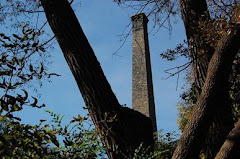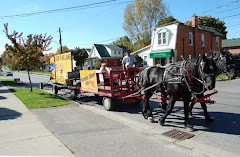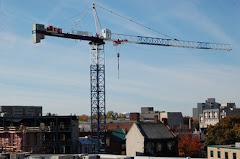Sometimes a meeting isn't about what you think it's going to be about, and much of understanding the aims of a workshop on affordable housing Tuesday had to do with definitions. For instance, affordable housing isn't social housing; the latter being government run, and in the case of Guelph, it's run through the County of Wellington's offices. Many big terms were thrown around like "primary rental", and "secondary rental", and how the city tracks one but not the other, but both are part of the consideration of affordable housing, and what the City might do to create more of it in Guelph.
Senior policy planner Joan Jylanne led the workshop of about 25 people through the complex world of housing in the Royal City Tuesday afternoon. "Affordable" is a definition set by the province but measure locally. That means in 2013, the low to moderate income range for renters was $23,000 to $46,000, making affordable rent $944, while the affordable ownership price for a home was $294,000 for those with a low to moderate household income range of $45,000 to $89,000.
Those were the most recent figures available from 2013, which assumes 30 per cent of a household's income is being spent on housing, however, about 20 per cent of owners are spending more than 30 per cent on their income on homes, while renters, on average, are spending more than 41 per cent.
Currently, the city is striving to find a way to secure a 30 per cent annual portion of new development to be earmarked for affordable housing split between 27 per cent for ownership and 3 per cent for rental. In looking at the city's housing needs, ownership isn't the issue so much as finding small rental units like bachelor or one-bedroom apartments. Those types of apartments are the hardest to come by in Guelph, and it's also the sector of the real estate market that is growing the fastest and is the most appeal to people on the low income side.
According to provincial figures as of last August, Guelph has a .6 per cent vacancy rate, the lowest in Ontario. A healthy rate is considered 3 per cent, and while Guelph's more recent vacancy rate is closer to 1.2 per cent, it's because much of the housing that's come online has been geared to seniors. Also interesting, there hasn't been any new stock of primary rental apartments in five years, which will soon change with the construction of the new building at Imperial and Elma.
The secondary rental market, dwellings not originally intended to be rental units like basement apartments or homes bought with the intention of turning into rental homes, is reportedly very strong in Guelph. They say "reportedly" because the city has no metrics to track secondary rentals, and thus they can't be factored into the discussion on affordable housing, citing concerns that the supply may not be as secure as the primary market.
That was the background for the discussion.What the City wanted was feedback about what measures it should take in terms of policy, procedure and financial tools it will need to form policy. Options include how to work with developers to create financial incentives to create affordable housing, how best to utilize municipal lands for affordable housing, and whether or not it's in the city's interest to create a "land bank" to protect lands that could potentially be used for affordable housing.
The people gathered for the workshop were led through 24 questions and asked to rank the topics on a scale of five from "Very Important" to "No Very Important." In addition, there was group work where everyone in attendance was asked to consider eight of the 24 topics in greater detail and discussion.
One group talked about the general difficulties in launching the strategy, and what factors should be considered in forming one. For instance, the group discussed how people with disabilities should be a specific part of the conversation on what's affordable, and the additional levels of difficulty in accessing units that may be unique to those with mobility issues. They also suggested that "affordability" should mean more than just the cost of the actual house, but it should also be about access to schools, transportation and services.
The other group considered more practical matters, like the feasibility of using municipal land to help foster affordable housing development, or creating a "land bank." The group agreed that these approaches might do a lot for the city's infill, and the difficulty in getting brownfield sites cleaned up and redeveloped. Creating new financial tools to spur affordable housing development was also discussed. One idea was to create community mortgages that would be affordable to secure in exchange for reaping lower profits at resale. Another suggestion was finding a way to encourage direct community investment in affordable housing more directly, and on a smaller scale.
A second workshop took place Tuesday evening and is just one of a number of steps being taken as the City develops its Affordable Housing Policy. According to Jylanne, the public feedback will be released sometime in the first quarter of 2016, with the finalized plan being brought forward to council sometime later this year.
To learn more about the Affordable Housing strategy being developed, click here. To take the City's survey on Affordable Housing click here, it's open until February 22. And you can hear my conversation with Joan Jylanne on this Friday's edition of the Guelph Politicast.
*The red section above was altered from the original version for clarity. This is how it originally read: "Affordable" is a definition measured at the provincial level, and in the low to moderate range, which is household income between $23,000 and $46,000, that means spending an average of $944 on rent or $1,153 to own.
*The red section above was altered from the original version for clarity. This is how it originally read: "Affordable" is a definition measured at the provincial level, and in the low to moderate range, which is household income between $23,000 and $46,000, that means spending an average of $944 on rent or $1,153 to own.


















No comments:
Post a Comment